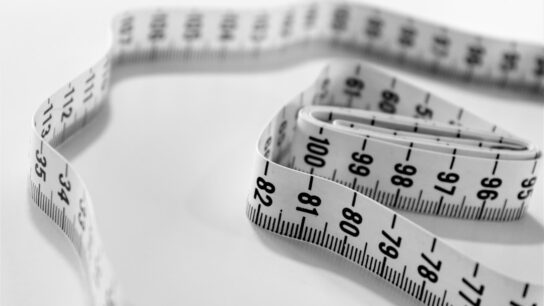The control panel of a washing machine can seem daunting at first, with its array of buttons and settings. However, once you understand the functions of each button, it becomes much simpler to use. The control panel typically includes buttons for power, temperature, load size, cycle selection, and additional options such as pre-soak or extra rinse. The power button is used to turn the machine on and off, while the temperature button allows you to select the water temperature for your wash cycle. The load size button lets you choose the appropriate water level for the amount of laundry you are washing. The cycle selection button is used to choose the type of wash cycle you want, such as normal, delicate, or heavy-duty. Additional options like pre-soak or extra rinse can be selected to customize your wash cycle to your specific needs. Understanding how to use these buttons will allow you to effectively operate your washing machine and achieve the best results for your laundry.
The control panel may also include a digital display that shows the remaining time for the wash cycle, as well as any error codes that may appear if there is a problem with the machine. It’s important to familiarize yourself with the symbols and indicators on the display so that you can easily interpret any messages or alerts that may appear. Some washing machines also have a child lock feature on the control panel to prevent accidental changes to the settings during a wash cycle. By understanding how to use the control panel and its various features, you can ensure that your laundry is washed effectively and efficiently every time.
Key Takeaways
- The control panel of the washer is the central hub for selecting wash settings and options.
- When sorting and loading laundry, separate items by color, fabric type, and level of soiling.
- Use the correct detergent for the type of laundry being washed, and follow the manufacturer’s guidelines for the appropriate amount.
- Select the right wash cycle based on the type of fabric and level of soiling to ensure optimal cleaning and care for your clothes.
- Utilize the clean washer cycle regularly to keep the washer free from residue and odors.
- Regular maintenance and cleaning of the washer, including the door seal and detergent dispenser, can help prevent issues and prolong the lifespan of the appliance.
- Troubleshoot common issues such as leaks, excessive noise, and error codes by referring to the user manual or contacting customer support.
Sorting and Loading Laundry
Sorting and loading laundry properly is essential for achieving the best results from your washing machine. Before loading the machine, it’s important to sort your laundry into separate piles based on color, fabric type, and level of soiling. This will prevent colors from bleeding onto lighter fabrics and ensure that delicate items are not damaged by more abrasive fabrics. Once your laundry is sorted, it’s time to load the machine. It’s important not to overload the machine, as this can prevent the laundry from being washed effectively and may cause damage to the machine over time. On the other hand, underloading the machine can result in an inefficient use of water and energy. It’s best to fill the machine to about three-quarters full, leaving enough room for the laundry to move around freely during the wash cycle.
When loading the machine, be sure to distribute the laundry evenly around the agitator or drum to prevent unbalanced loads, which can cause the machine to shake excessively during the spin cycle. It’s also important to check pockets for loose items such as coins or keys, as these can damage the machine if they become lodged in the drum or pump. By sorting and loading your laundry properly, you can ensure that your washing machine operates efficiently and that your clothes are washed effectively.
Using the Correct Detergent
Using the correct detergent is crucial for achieving clean and fresh-smelling laundry. There are several types of laundry detergent available, including liquid, powder, and pods, each of which is designed for specific types of washing machines and water conditions. It’s important to choose a detergent that is suitable for your machine and water type to ensure that it works effectively. For example, high-efficiency (HE) washing machines require a specially formulated HE detergent that produces fewer suds and is designed to work with lower water levels. Using a regular detergent in an HE machine can result in excessive sudsing and may not clean your laundry effectively.
In addition to choosing the right type of detergent, it’s important to use the correct amount for your load size and soil level. Using too much detergent can result in soap residue on your clothes and inside the machine, while using too little may not clean your laundry effectively. It’s also important to follow any manufacturer’s instructions for pre-treating stains or adding fabric softener, bleach, or other laundry additives. By using the correct detergent and following dosage instructions, you can ensure that your laundry is cleaned effectively and that your washing machine operates efficiently.
Selecting the Right Wash Cycle
| Wash Cycle | Water Temperature | Duration | Soil Level |
|---|---|---|---|
| Normal | Warm | 45 minutes | Medium |
| Heavy Duty | Hot | 60 minutes | Heavy |
| Delicate | Cold | 30 minutes | Light |
Selecting the right wash cycle is essential for achieving clean and well-maintained laundry. Most washing machines offer a variety of wash cycles designed for different types of fabric and levels of soiling. Common wash cycles include normal, delicate, heavy-duty, quick wash, and hand wash. It’s important to choose the appropriate wash cycle for your laundry to ensure that it is cleaned effectively without being damaged. For example, delicate fabrics such as silk or lace should be washed on a gentle cycle with a low spin speed to prevent stretching or tearing. On the other hand, heavily soiled items like work clothes or sports uniforms may require a heavy-duty cycle with a longer wash time and higher spin speed.
Some washing machines also offer specialty cycles such as allergen or sanitize cycles that are designed to remove allergens or bacteria from your laundry. These cycles can be useful for households with allergy sufferers or for washing items like towels or bedding that may harbor bacteria. It’s important to familiarize yourself with the available wash cycles on your machine and choose the one that best suits your laundry needs. By selecting the right wash cycle, you can ensure that your laundry is cleaned effectively and that your clothes are well-maintained.
Utilizing the Clean Washer Cycle
Utilizing the clean washer cycle is an important step in maintaining your washing machine and preventing odors and residue buildup. Over time, soap scum, dirt, and bacteria can accumulate inside your washing machine, leading to unpleasant odors and affecting the cleanliness of your laundry. The clean washer cycle is designed to remove these residues and sanitize the interior of the machine, keeping it fresh and clean. It’s recommended to run a clean washer cycle at least once a month, or more frequently if you frequently wash heavily soiled items or use a lot of fabric softener.
To use the clean washer cycle, simply add a washer cleaner or a mixture of white vinegar and baking soda to the detergent dispenser or directly into the drum, then select the clean washer cycle on your control panel. The machine will fill with hot water and agitate for an extended period to thoroughly clean and sanitize the interior. Once the cycle is complete, it’s important to wipe down the door seal, detergent dispenser, and drum with a damp cloth to remove any remaining residue. By utilizing the clean washer cycle regularly, you can maintain a fresh-smelling washing machine and ensure that your laundry is cleaned effectively.
Maintaining and Cleaning the Washer

Maintaining and cleaning your washing machine is essential for ensuring its longevity and performance. In addition to running regular clean washer cycles, there are several other maintenance tasks that should be performed to keep your machine in top condition. One important task is cleaning the detergent dispenser and fabric softener dispenser regularly to prevent residue buildup that can affect the cleanliness of your laundry. These dispensers can be removed from most machines for easy cleaning with warm soapy water.
It’s also important to clean the door seal regularly to remove any dirt or debris that may have accumulated there. This area can be prone to mold growth if not cleaned regularly, so it’s important to wipe it down with a damp cloth after each use. Additionally, it’s a good idea to leave the door open between washes to allow air to circulate inside the drum and prevent mold growth.
Another important maintenance task is checking and cleaning the lint filter regularly. This filter traps lint and debris from your laundry to prevent it from clogging the drain pump or drain hoses. Most machines have a removable lint filter that should be cleaned after each use to ensure proper drainage.
Finally, it’s important to inspect and clean the drain pump filter periodically to prevent clogs that can affect drainage and cause odors. By performing these maintenance tasks regularly, you can ensure that your washing machine operates efficiently and that your laundry is cleaned effectively.
Troubleshooting Common Issues
Despite proper maintenance and care, washing machines can sometimes experience issues that affect their performance. Common issues include leaks, excessive noise during operation, failure to start or complete a cycle, and error codes on the control panel display. If you encounter any of these issues, there are several troubleshooting steps you can take before calling for professional assistance.
One common issue is leaks from the machine, which can be caused by a variety of factors such as loose hoses or damaged door seals. If you notice water pooling around your machine, it’s important to check all hoses and connections for leaks and tighten them if necessary. Additionally, inspect the door seal for any signs of damage or mold growth that may be causing leaks.
Excessive noise during operation can be caused by unbalanced loads or foreign objects trapped in the drum or pump. If you notice excessive shaking or banging during operation, stop the machine and redistribute the laundry evenly around the drum before restarting it.
If your machine fails to start or complete a cycle, check that it is properly plugged in and that the power button is turned on. Additionally, ensure that the door is securely closed and latched before starting a cycle.
If you encounter error codes on the control panel display, consult your machine’s manual for information on what each code means and how to resolve it. In some cases, simply resetting the machine by unplugging it for a few minutes before plugging it back in may resolve minor issues.
If you are unable to resolve an issue on your own, it’s important to contact a professional appliance repair technician for assistance. By troubleshooting common issues and performing regular maintenance on your washing machine, you can ensure that it operates efficiently and effectively for years to come.
Sure, here’s a paragraph that mentions a related article to the Whirlpool Cabrio washer and includes a link to the related article:
“Are you considering purchasing a Whirlpool Cabrio washer? Before making your decision, it’s essential to understand the benefits and features of this popular appliance. To help you make an informed choice, check out this insightful article on the latest advancements in washing machine technology at GetImpData. Discover how the Whirlpool Cabrio washer stands out in terms of efficiency, performance, and innovative design.”
FAQs
What is a Whirlpool Cabrio washer?
A Whirlpool Cabrio washer is a type of top-loading washing machine manufactured by Whirlpool. It is known for its large capacity, energy efficiency, and various washing cycles.
What are the features of a Whirlpool Cabrio washer?
Some features of a Whirlpool Cabrio washer may include a large capacity drum, energy-efficient design, multiple washing cycles, and advanced technology for optimal cleaning performance.
How do I use a Whirlpool Cabrio washer?
To use a Whirlpool Cabrio washer, load the clothes into the drum, add detergent and fabric softener, select the desired washing cycle and options, and start the machine. Follow the manufacturer’s instructions for specific details.
What are common issues with Whirlpool Cabrio washers?
Common issues with Whirlpool Cabrio washers may include unbalanced loads causing the machine to shake, error codes indicating problems with the machine, and issues with the water inlet or drainage.
How do I troubleshoot problems with a Whirlpool Cabrio washer?
To troubleshoot problems with a Whirlpool Cabrio washer, refer to the user manual for error code explanations and possible solutions. Additionally, checking for unbalanced loads, ensuring proper water supply and drainage, and cleaning the machine regularly can help prevent issues. If problems persist, contact Whirlpool customer service for assistance.



